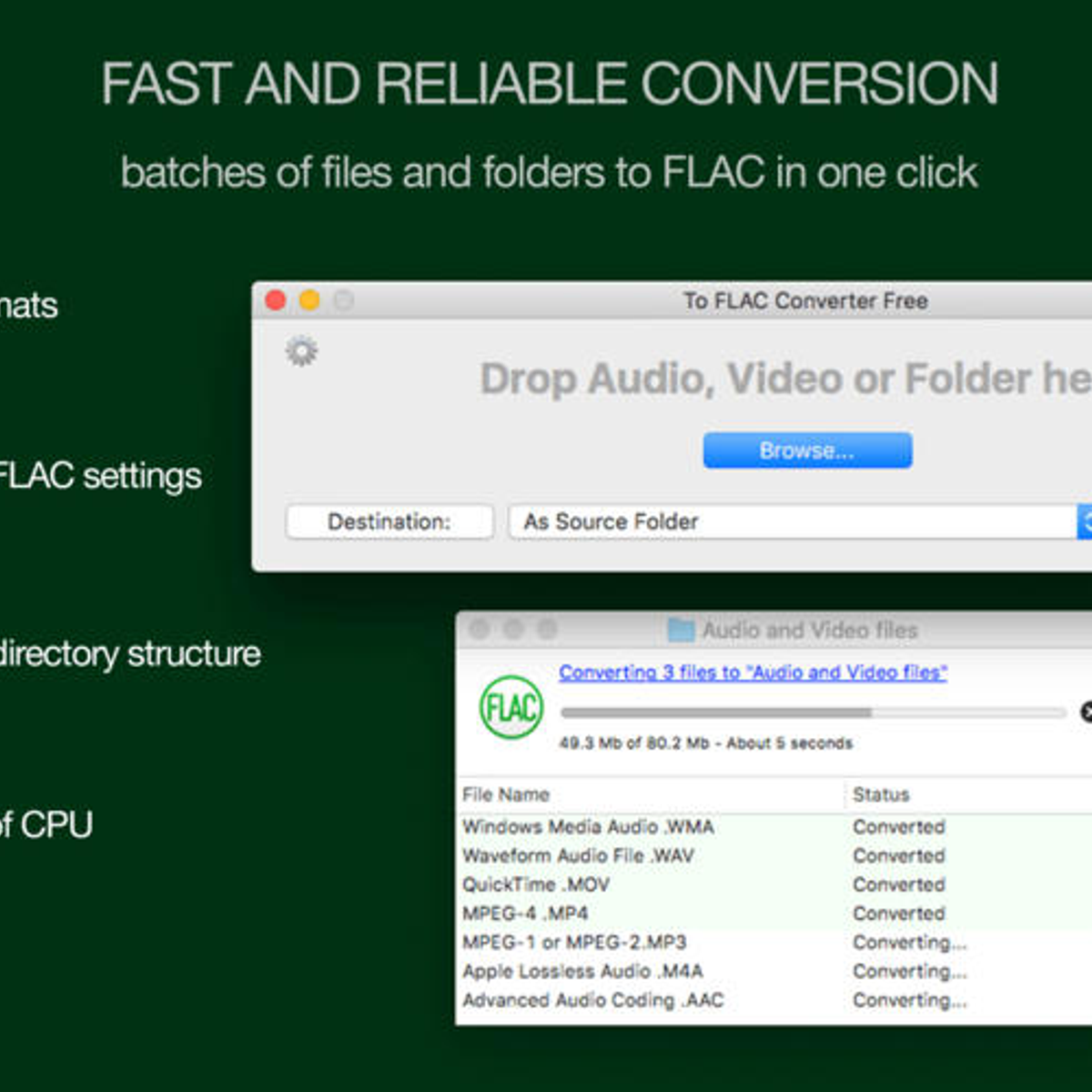What is FLAC?- FLAC is an acronym for Free Lossless Audio Codec.
- Free - Flac is a freely available open-source audio codec that is not protected by any legal patent.
- Lossless – Many of the most common audio files currently available on the Internet are data-compressed to reduce the size of the files in order to expedite downloading. Data compression (not to be confused with audio compression) takes two forms: lossy and lossless. Lossy compression produces small files that are quick to download and that occupy relatively little hard disc space. Even though this form of compression typically jettisons 80% of the data of the original, uncompressed sound file, tests have shown that most listeners are unable to discern any loss in audio quality under most listening conditions most of the time. However, most listeners tend to listen to popular music recordings that typically occupy a very limited dynamic range. Lossy compression is less well adapted to represent music with a wide dynamic range – a category that includes ambient acoustic music recordings.
- Lossless compression works in much the same way as a zip file. That’s to say, although the file is compressed its integrity is not compromised; none of the data is thrown away; it is fully restored upon decompression resulting in an output file that is identical to the input file. FLAC compresses files at a ratio of approximately 2:1, reducing the size of the original by 50%.
- Audio Codec – The term codec is derived from coder/decoder and is a device or computer programme for compressing or decompressing digital media files. A codec incorporates an encoder, to compress the file and a decoder to decompress it so that it can be played.
|
Why FLAC?- The CHARM website is designed as a resource with a long life-expectancy and although lossy files such as MP3 are smaller and would be quicker to download, such formats are likely to be superseded as Internet connections become faster and data storage becomes cheaper. In making CHARM’s audio transfers available for download as FLAC files we hope to achieve the fastest possible download times without compromising the audio content. Although FLAC is only one of several lossless audio codecs it is quickly becoming one of the most widely used with good cross-platform support. The resolution of our FLAC files is 16bit 44.1Khz - precisely the same quality as a commercial Compact Disc.
|
Why is hi-fi important when the 78s are low-fidelity?- The audio quality of 78rpm records is determined by the technical limitations of the original recording, the surface material into which the recordings were engraved, and by the ravages of time and wear. Lossy data compression introduces another, entirely different type of degradation: one that is not directly comparable with the mechanical vicissitudes of the original analogue record. It is quite common, for example, for listeners to find lossy audio compression fatiguing during extended listening even though it may not at first be easy to differentiate between a lossless and a lossy file. Very soft sounds are worst affected by low-resolution audio and although 78rpm records are usually swathed in surface noise a lot of low level ambient sound and a sense of the acoustic space in which the music was recorded is often discernable particularly once the worst clicks and pops have been removed. Having gone to all the lengths we have to recapture and preserve in the best possible quality the full dynamic range of these recordings we believe that it would be perverse to discard 80% of the data simply in order to expedite rapid downloads.
|
How to play your FLAC downloads- Once you have downloaded your FLAC files you can use them in any of the following ways:
- 1. Decode the FLAC file to restore the original wav file. A wav file is approximately twice the size of its FLAC equivalent and will therefore require double the storage space. The official FLAC tools are available for Linux, Mac OS X, Windows and other platforms from the FLAC website where a number of links to other encoding/decoding front ends can also be found.
- 2. Burn wav files onto a CDR and play them with standard audio CD player. Some CD authoring software packages automatically decode FLAC files and convert them to CD Audio files before writing them to CDR.
- 3. Load FLAC files onto a Digital Media Receiver or streaming device integrated into your hi-fi system.
- 4. Load FLAC files directly onto a compatible handheld device. A list of compatible hardware is available on the FLAC website.
- 5. Play FLAC files with a media player such as:
- PC
- NB. Windows Media Player will not currently play FLAC files without the installation of a DirectShow filter.
- Mac OS X
- - VLC
- - Cog
- - Fluke is an AppleScript that automatically installs the components necessary to play FLAC files in iTunes
- For other players/decoders see the FLAC website
|
How long do FLAC files take to download?- Download times vary depending on a number of factors but on average, a typical 10Mb FLAC file will take less than 10 seconds to download with an 8Mb/s Internet connection. With a 2Mb/s connection, the same file will take approximately 15 seconds and approximately 1 minute with a 1Mb/s connection.
|
TAGS- CHARM FLAC audio files are tagged with native FLAC tags. As much relevant metadata as possible has been included. However, tags are not well suited to classical music metadata so some users may prefer to edit the tags to suit their own preferences. This can be accomplished quickly and easily with Exceltagger. With thanks to William Hooper.
|
